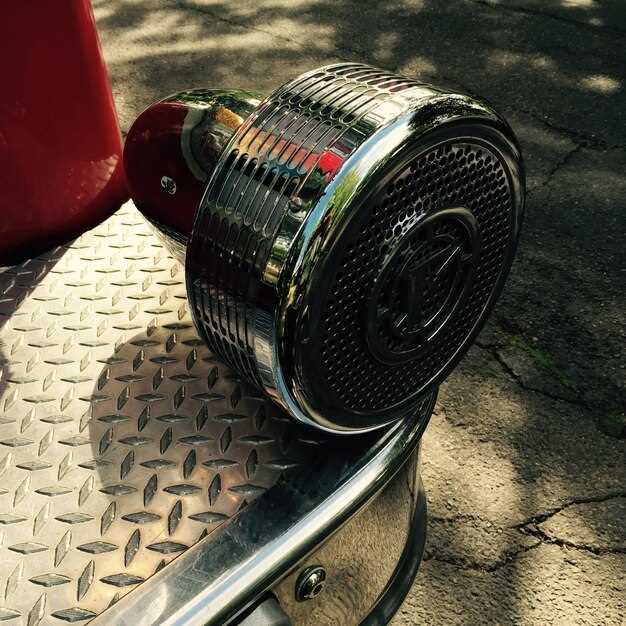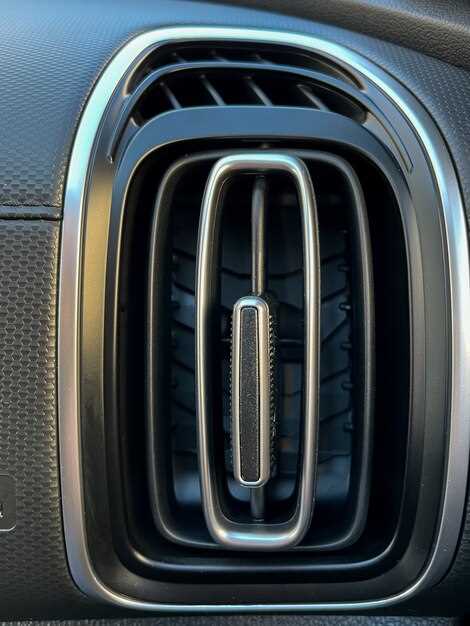
The realm of motorsports is constantly evolving, with technology playing a pivotal role in enhancing performance. Among the numerous innovations, forced induction systems such as turbochargers and superchargers stand out as critical components that can significantly influence a racing vehicle’s capabilities. Each system has its distinct characteristics, advantages, and drawbacks, making the choice between them a crucial consideration for racers striving for optimal performance.
Turbochargers leverage exhaust gases to spin a turbine, which compresses incoming air and forces it into the engine. This process not only increases the air density but also enhances the engine’s power output without requiring larger displacement. The overall efficiency of turbocharging can lead to improved fuel economy and a higher power-to-weight ratio, making it a popular choice in various racing disciplines. However, turbo systems can suffer from turbo lag, which may affect throttle response, particularly in certain racing situations.
On the other hand, superchargers draw power directly from the engine’s crankshaft, providing immediate boost and virtually eliminating lag. This feature can lead to a more consistent power delivery, which is essential in racing environments where instant throttle response can make all the difference. Although superchargers typically offer a simpler installation and tuning process, their impact on fuel consumption and engine load must be carefully considered, especially in long-duration races.
Choosing between a turbocharger and a supercharger ultimately depends on various factors, including the type of racing, vehicle dynamics, and personal preference. In this article, we will delve deeper into the unique attributes of each system, comparing their performance in racing scenarios, and helping you decide which forced induction method is best for your specific racing needs.
Turbo or Supercharger: Which Is Best for Racing?
When it comes to maximizing performance in racing applications, the choice between a turbocharger and a supercharger can significantly impact a vehicle’s capabilities. Each of these forced induction systems offers distinct advantages and disadvantages that cater to different racing styles and preferences.
Turbochargers

- Power Band: Turbochargers provide a broader power band, allowing vehicles to gain power at higher RPMs. This can be particularly beneficial in racing situations where maintaining speed is crucial.
- Efficiency: They utilize exhaust gases to spin the turbine, which means they can produce more power without requiring additional engine modifications for increased air intake.
- Lag: The main drawback is turbo lag, as there’s a delay in response from the time the driver accelerates to when the boost kicks in. This can be a concern for races requiring immediate throttle response.
Superchargers
- Immediate Power: Superchargers offer instant boost since they are mechanically driven by the engine’s crankshaft. This allows for a quick throttle response, making them advantageous in short-distance races.
- Reduced Lag: With no lag, superchargers provide consistent power delivery throughout the RPM range, which is crucial for maintaining speed in competitive settings.
- Weight and Complexity: They tend to add more weight and mechanical complexity to the engine setup, which can be a disadvantage in weight-sensitive racing classes.
Conclusion
The decision between a turbocharger and a supercharger ultimately hinges on the specific racing context and the desired driving characteristics. Turbochargers excel in efficiency and high-end power, making them suitable for long-duration races or endurance events. In contrast, superchargers shine in situations where immediate throttle response is essential, such as drag racing or short track events. Understanding the nuances of each system is crucial for racers looking to optimize their vehicle’s performance.
Understanding the Power Delivery Characteristics of Turbos and Superchargers
The fundamental difference in power delivery between turbos and superchargers lies in their method of forced induction. Superchargers operate directly from the engine’s crankshaft, providing immediate boost and power. This results in a linear power delivery, where acceleration feels seamless as the driver presses the throttle. The instant response can be especially advantageous in racing situations where quick acceleration is crucial.
In contrast, turbochargers utilize exhaust gases to spin a turbine, which in turn compresses the intake air. This process inherently introduces a lag known as “turbo lag,” which can result in a delayed power response. Although modern turbos have significantly reduced this lag with advanced technologies, the characteristic of a turbo’s power delivery is still less immediate compared to that of a supercharger. Drivers may feel a surge in power as the turbo spools up, which can create a more aggressive experience but may not always favor consistent acceleration during critical race moments.
The nature of the power delivery also influences how these components affect engine performance. Superchargers tend to provide a boost across the entire RPM range, making them ideal for applications where a consistent power curve is essential. This is particularly beneficial in racing scenarios requiring high levels of control and predictability.
On the other hand, turbochargers often produce more peak power, especially at higher RPMs, which can be advantageous in races that favor top-end speed. However, the reliance on exhaust flow means that turbocharged engines might struggle with throttle response at lower RPMs, potentially hindering performance during initial acceleration or at lower speeds.
Ultimately, the choice between a supercharger and a turbocharger depends on the specific racing conditions and the desired characteristics of the vehicle’s power delivery. The understanding of how each system reacts and delivers power under various circumstances is key to choosing the right setup for optimal racing performance.
Key Performance Factors: Boost Response and RPM Range Comparison

When evaluating the performance of turbochargers and superchargers in racing applications, two critical factors come into play: boost response and RPM range. Understanding these factors is essential for racers looking to optimize their engine’s performance.
Boost response refers to the time it takes for the forced induction system to deliver increased air pressure to the engine following throttle input. Turbochargers, which rely on exhaust gases to spool up their turbine, often exhibit a lag in boost response, particularly at lower RPMs. This turbo lag can delay power delivery, which may hinder the overall performance in situations that demand immediate acceleration. Advanced designs and materials have improved this response time, yet turbo lag remains a consideration for many racers.
On the other hand, superchargers are driven directly by the engine’s crankshaft, providing almost instantaneous boost. This direct connection allows for immediate throttle response, making superchargers particularly attractive for drivers who prioritize quick acceleration and consistent power delivery throughout the RPM spectrum. The absence of lag means that racers can expect more predictable performance when navigating tight corners or during rapid acceleration out of turns.
Regarding the RPM range, turbochargers generally perform best at higher RPMs. They can generate significant power and efficiency once spooled, making them suitable for high-performance applications where peak power is required at elevated engine speeds. However, this characteristic may limit their effectiveness in low to mid-range RPMs, potentially hurting performance in races with frequent speed fluctuations.
Superchargers, in contrast, provide a broader usable RPM range. Their linear power delivery means that drivers can expect reliable performance across a wider spectrum of engine speeds. This quality makes them a preferred choice for racing disciplines that demand consistent power across varying conditions, such as circuit racing or drag racing where a strong launch is critical.
In summary, the choice between turbochargers and superchargers for racing hinges significantly on the desired balance of boost response and effective RPM range. Turbochargers excel in high-speed applications with sufficient throttle control, while superchargers offer immediate power and adaptability at lower RPMs, making them ideal for racers requiring quick acceleration and broader power availability.
Cost-Benefit Analysis of Turbocharging vs Supercharging for Race Cars
When evaluating the performance modifications for race cars, both turbocharging and supercharging present unique advantages and disadvantages. This analysis will focus on key cost-benefit factors associated with each forced induction system.
Cost Considerations: Turbochargers typically offer a lower initial cost compared to superchargers. This price difference can be attributed to the complexity of supercharger installations, which often require additional components such as pulleys and belts. However, the installation costs of turbochargers can escalate due to the need for supportive modifications to the exhaust system, intercoolers, and tuning, which can also add to the overall expense.
Performance Efficiency: Turbochargers tend to provide greater efficiency, extracting energy from the exhaust gases. This results in more power for less fuel consumed, which is advantageous during a race. In contrast, superchargers deliver immediate power responsiveness but are often less efficient in terms of fuel consumption. This difference can significantly impact race strategies, especially in endurance racing where fuel management is critical.
Power Output: Superchargers can offer a more linear power band, providing instant torque at lower RPMs. This characteristic is valuable in situations where immediate throttle response is essential. Turbochargers, while able to produce higher peak power, may experience lag, leading to inconsistent acceleration if not properly tuned. Races that favor low-end torque may lean towards supercharging for its immediate performance delivery.
Reliability and Maintenance: Turbocharging systems can introduce complexities related to heat management and exhaust tuning, leading to potential reliability issues under extreme racing conditions. On the other hand, superchargers are often regarded as more straightforward, leading to less maintenance downtime. However, performance demands can increase wear and tear on both systems, emphasizing the need for regular checks and maintenance regardless of the chosen system.
Resale Value: Race cars equipped with superchargers can appeal to enthusiasts for their robust power characteristics, potentially enhancing resale value. Turbocharged cars may attract buyers focused on efficiency and peak power potential, but their resale value can be more volatile depending on tuning and performance reputation.
In conclusion, the decision between turbocharging and supercharging for racing applications involves a careful assessment of costs and benefits. Each system offers distinct advantages that cater to different racing styles and requirements. Ultimately, the best choice will depend on specific racing goals, budget constraints, and personal preference of the racer.



